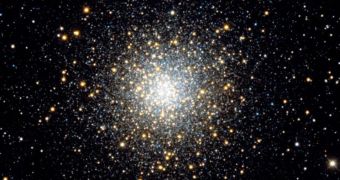Astronomers were shocked to find that a known galaxy cluster has recently started emitting high amounts of X-ray and gamma ray light. Originally, they thought that such emissions could originate in the massive amounts of inert gas lying in intergalactic space, however ESA's Integral X-ray observatory has proven otherwise. Is looks like the bright X-ray light is being produced while the galaxy cluster accelerates elementary particles to relativistic speed, since they are too powerful to be generated by the gas clouds.
In previous X-ray observations, astronomers only detected low-energy radio waves in similar galaxy clusters that accelerate particles to high speeds. The study has been made by the Geneva Observatory in Switzerland.
Stephane Paltani, one of the astrophysicists participating in the study, stated that it was the first time when astronomers were able to detect high-energy X-ray radiation coming from a distant galaxy cluster, however the sensitivity of the equipment used in observations was ever increasing. Paltani argued that the cluster could have collided with another, process which would have determined the mixing of massive quantities of gas. The resulted energy was released in the form of energy electrons, that gathered energy as they bounced randomly through the mass of matter.
It is estimated that the particles accelerated in the Ophiuchus galaxy cluster have energies at least twenty times higher than those created in the largest particle accelerator ever constructed by man, CERN's Large Hadron Collider. Even so, the LHC is still a great feat of mankind engineering, considering that it is only 27 kilometers in diameter while the Ophiuchus galaxy cluster is about two million light-year in diameter.
Nevertheless, the exact process through which these X-ray emissions are produced is largely unknown. Astrophysicists propose two scenarios. Either the electrons emitted in intergalactic gas mass are accelerated by powerful magnetic fields and create synchrotron radiation, or electrons are colliding with remnant radiation from the Cosmic Microwave Background. If the second scenario is correct, then electrons could indeed receive a boost in energy in order to emit X-ray radiation.

 14 DAY TRIAL //
14 DAY TRIAL //